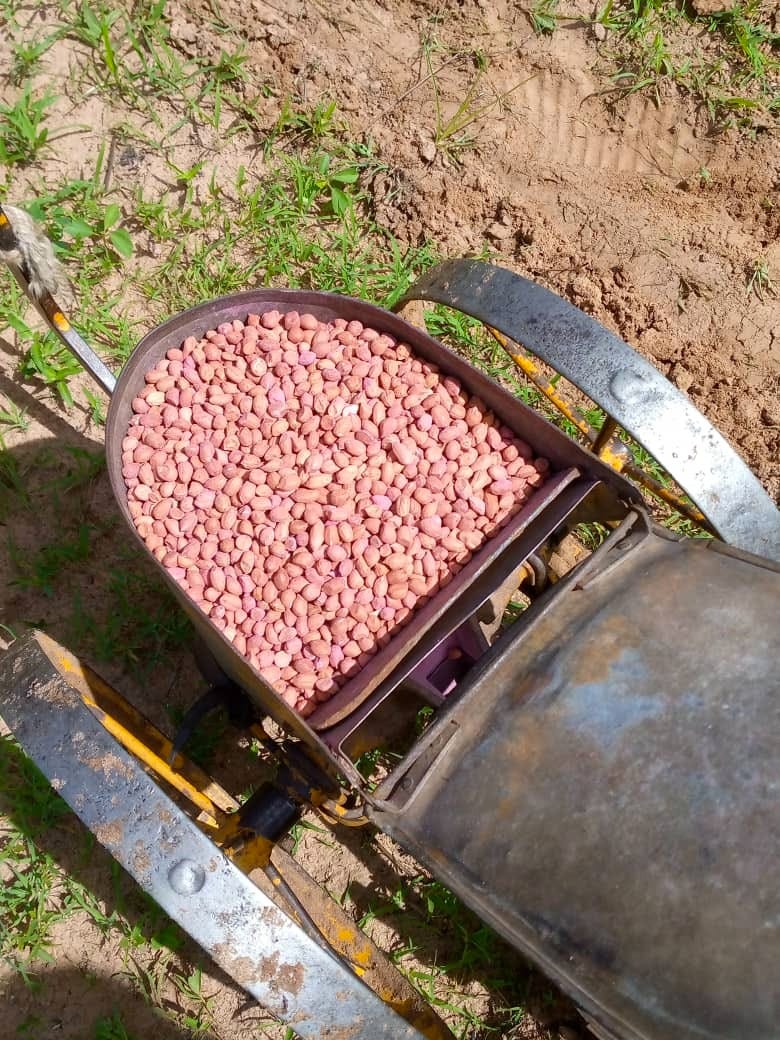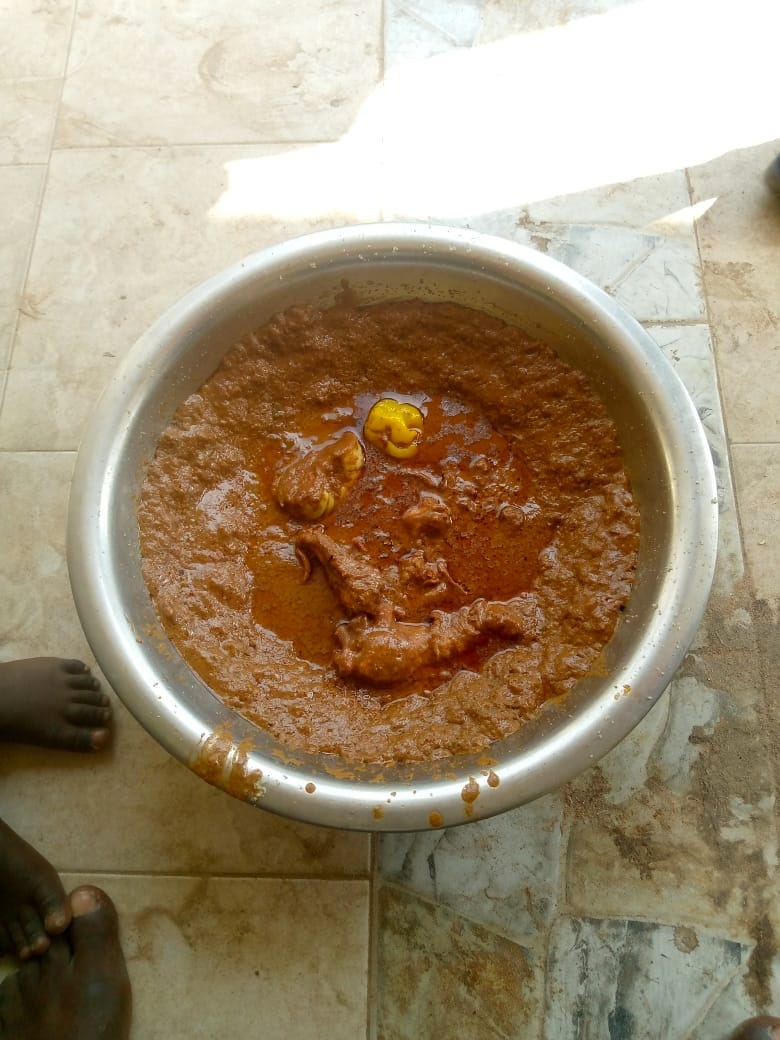"I hope people would find it interesting on the block."
So said Patrick to me a few days ago, sending along a small collection of photographs. I’ve told him it’s a blog but I think his phone corrects him. But he’s thinking about y’all, wondering what you might like to know about life in The Gambia. They’re pretty great photos honestly.
Patrick has sent a lot of interesting photos of improvised equipment—carts made out of old transaxles and stuff like that. This is unusual. I can’t figure out if this is hand-made or just a hundred years old. It’s a planter, of course, planting Jimmy Carter’s old cash crop, which Patrick refers to as groundnuts.
These look redder than peanuts to me, but Wikipedia assures me that groundnut equals peanut, and the article is accompanied by nuts—sorry, legumes—of this color, so it must indeed be peanuts.
“This was in Kuntaya,” he told me, clarifying later, “This was last year near Kerr Amadou.” Sure enough Google Maps finds Kuntaya for me, a little spiderweb of white roads on a featureless tan background. Points of interest include a mosque—almost every hamlet has at least a mosque—an elementary school (closed), and Chaw's Agrobusiness (closed).
It’s easy to make fun of places like that. I used to live a short ways from a place called Loomis which famously had a yellow caution light hung over the main road crossing. No traffic lights in Kuntaya. Probably no traffic. Certainly no Walmart or McDonalds.
All the same, there is an austere beauty in these places. They remind me, frankly, of Arkansas or Mississippi.
We had a little conversation yesterday about groundnuts. “How,” I asked, “are they used?”
“Groundnuts are a primary staple food here in The Gambia and it's our most valued cash crop here in terms of export. It’s prepared in many ways for consumption. They can be eaten raw or boiled. But for it to be in a stew it's pounded into paste. This is locally called deao or ousoup in Manjago.1 After it's pounded into paste it's used to cook a delicious food called domoda which is groundnut paste with vegetables and meat or fish. It's also cooked with sorrels and vegetables after boiling.
I noted that in the U.S. south we eat boiled peanuts. “Of course,” he replied, “it's nice when it's boiled. One can boil it by adding salt and leaving it on fire for minutes.” Of course I just buy it from gas stations, but it’s interesting because this strikes me as a very direct inheritance from African slaves.
Finally he included one last photo:
“This is groundnut paste cooked with vegetables as you can see—bitter tomatoes and yellow peppers. In the middle you can see the oil from the groundnut paste, which is sold in shops.”
I can’t say this is the most appetizing photo of food Patrick has sent me but I guess I’d try it. I mean, peanut butter and vegetables, what’s wrong with that?
Manjago is Patrick’s native tribe and language. As I have previously mentioned, he’s a double-minority: Manjago comprise less than 5% of the population, but he’s also a Christian in a country that is probably 95% Muslim.









Thanks for sharing, Patrick. Sounds delicious!😋